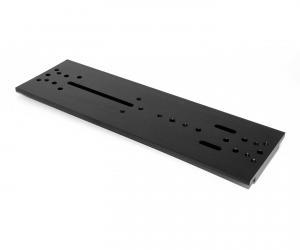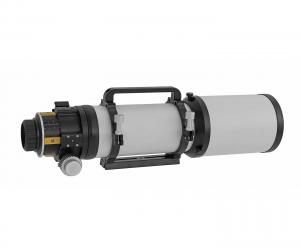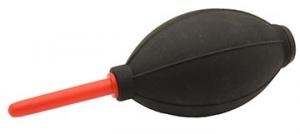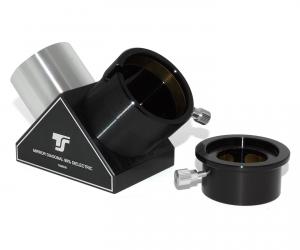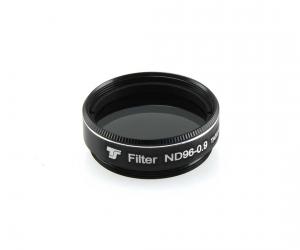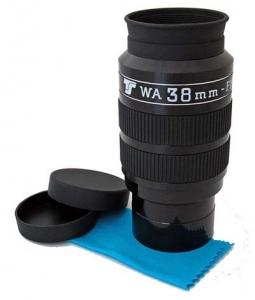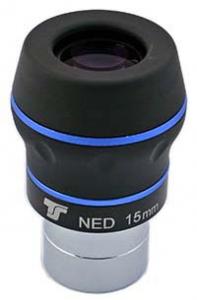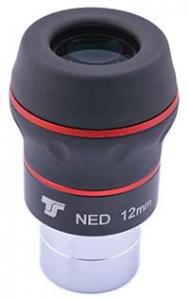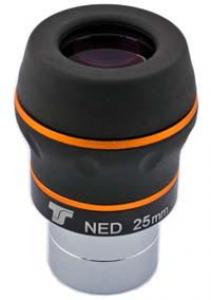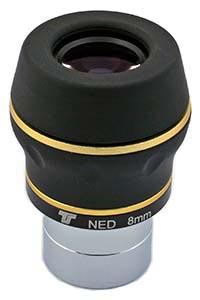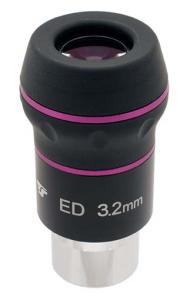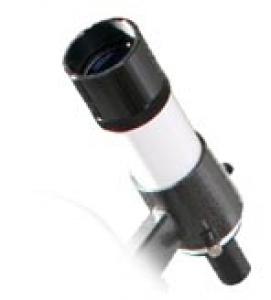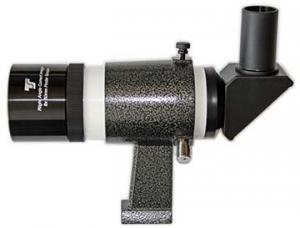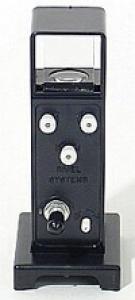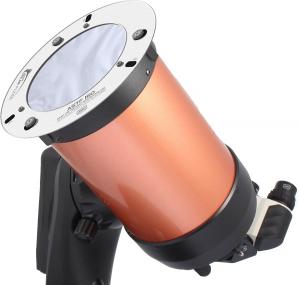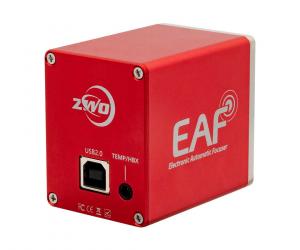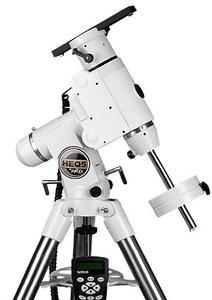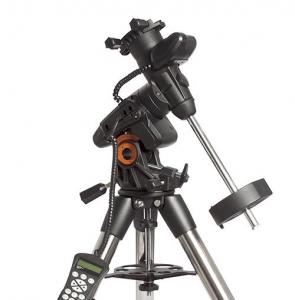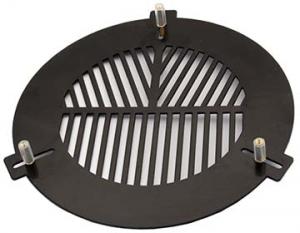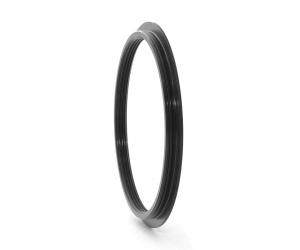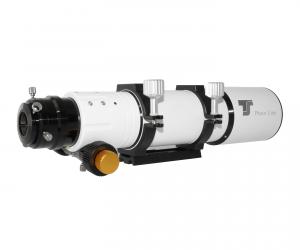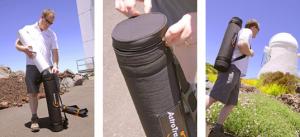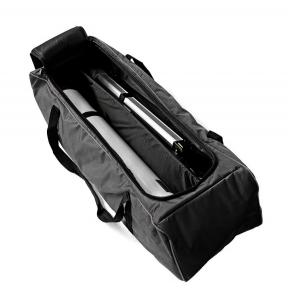- Telescopes
- Overview:
Telescopes - Achromatic Refractor
- Apochromatic Refractor
- Overview:
Apochromatic Refractor - ED Refractor - less color aberration than an achromatic
- SD APO - color free 2-element APO objective
- EDT APO - 3 element ED objective
- High End APO with 3-element APO objective - no color aberation
- Flatfield APO with flat field for Astrophotography
- All Apos and EDs from all manufacturers - large overview
- TS APO and ED from Japan with high quality optics
- Overview:
- Newtonian Telescopes
- Dobsonian Telescopes
- RC Ritchey Chretien Telescopes
- Casssegrain Telescopes
- Reflektor Telescopce with Lens Correcture
- Maksutov Cassegrain Telescopes
- GoTo Telescopes
- Solar Telescopes H-Alpha
- Overview:
- Mounts Tripods Rings Rails Power Supply ...
- Overview:
Mounts Tripods Rings Rails Power Supply ... - Mounts Equatorial with GoTo
- Mounts Equatorial without GoTo
- Mounts Azimutal with GoTo
- Mounts Azimutal without GoTo
- Mounts GoTo - Harmonic Drive
- Travel mounts for astro imaging
- Tripods Piers Polar Wedges
- Mount Control & Electronics
- Dovetail Clamps, Plates and Mount Adapters
- Tube Rings
- Power Supply
- Counterweights Balance Weights
- Mount Accessories - Other
- Overview:
- Telescope Accessories
- Overview:
Telescope Accessories - Eyepieces
- Barlows & Reducer Lenses
- Diagonal Mirrors and Prisms
- Binocular Viewers
- Finder Scopes
- Telescope Collimation and Test
- Cleaning Tools
- Transport and Storage
- Dust protection for Telescopes & Accessories
- Stray Light Protection
- Dewcaps and Heater
- Focusers, Adapters, Motorfocus
- Telescope DIY & Improvement
- Other telescope accessories
- Replacement Parts
- Overview:
- Filters
- Overview:
Filters - Color Filters and Color Filtersets
- Nebular Filters for Visual Observing
- Neutral-Density and Polfilter
- Photo Narrowband Nebular Filters
- Photo Broadband Filters
- Photo Planetary Filters
- Photo R-G-B and IR Cut Filters
- Photo - Filtersets
- Photometric Filters
- Clip Filter for DSLR Cameras
- Filter Wheels and Filterslider
- Solar Filters for white light
- Solarfilter for H-Alpha and Calcium
- Overview:
- Adaptors
- Overview:
Adaptors - Adapter 1,25" and 24,5mm
- Adapter 2"
- Adapter T2 - M42x0.75
- Adapter M48x0,75
- Adapter M54
- Adapter SC
- Adapter M63
- Adapter M68
- Adapter to other Threads
- Adapter Extensions
- Adapter camera bayonet
- Adapter Objective Filterthread
- Adapter Quick Changing , Rotation
- Adapter Eyepiece Projection
- Adapters Tilting
- Overview:
- Astrophotography and Photography
- Overview:
Astrophotography and Photography - Cooled Cameras
- Cameras without Cooling
- Deep-Sky Cameras uncooled
- Set-Offers Camera, Filter, Wheels
- Acessories for Cameras
- Travel mounts for astro imaging
- Imaging Correctors for Telescopes
- Autoguiding Cameras & Sets
- Everything for Guiding
- Focusing aids - Bahtinov mascs
- Flat Field foils and boxes
- Lenses for Cameras
- Piggyback Camera Holder
- Camera Bags, Photocases & more
- Digital Camera and Smartphone Adapter
- Other photo accessories
- Overview:
- Binoculars, Spotting Scopes, Microscopes, Range Finders
- Overview:
Binoculars, Spotting Scopes, Microscopes, Range Finders - Roof Prism Binoculars
- Binoculars with Porro prisms
- Binoculars from 100mm Aperture
- Binoculars with 1,25 inch eyepieces
- TSMX APO Binoculars
- Binoculars for Astronomy
- Binoculars Hiking Bird watching
- Monoculars - Opera Binoculars
- Accessories for Binoculars
- Spotting Scopes
- Range Finders
- Microscopy
- Bags for Phototripods & Binoculars
- Overview:
- Phototripods and Binomounts
- Books, Software
- Overview:
Books, Software - Books for Astronomy Beginners
- Star Charts and Planispheres
- Books about our Solar System
- Observing Tips for Amateurs
- Popular Astronomy Literature
- Teaching material
- Astrophotography books
- Telescopes, Observatories, Construction
- Calendars Yearbooks
- Software, Star Charts
- Books for Microscopers
- Books Nature and Animals
- Nature Photography TimeLapse
- Overview:
- Night Vision, Magnifiers, Weather, Domes & more
- Beginner Astronomy and Gift Ideas
- Second Hand & Special Offers
- New products
Manufacturer: -TS Teleskope
Product number: TSAPO102F7
EUR1099.00new
EUR 1.099,00RRP EUR 1.348,00you save 18.5% (EUR 249,00)
incl. 19 % VAT (DE)
The VAT indicated refers to that applicable in Germany. After logging in, the VAT amount is adjusted to the applicable VAT of the stored delivery country. Therefore, the final price may vary accordingly.
excl. 13.95 € shipping costs (DE)
more details to the shipping costs ...Please log in to calculate shipping costs to your country.
Product expected to be available from 01.12.2025
rating: 4.5 of 5TS-Optics Doublet SD Apo 102 mm f/7 - FPL53 / Lanthanum Objective2
- Details..
- Technical data..
- In the box..
- Reviews..
- FAQ..
- Manufacturer infos..
- Safety informations..
TS-Optics PhotoLine 102 mm f/7 Dublet FPL53 Apo
This apochromat from the PhotoLine series from Teleskop Service offers very good performance in any application area. By combining FPL53 (Ohara, Japan) and a lanthanum glass element, a chromatic correction is achieved which matches the one of an FPL53 triplet - with significantly quicker cooling down. Even at highest magnification, the image remains free from distracting chromatic aberration. This means that the fast refractor is not only very well suited for astrophotography and wide-field observation, but also for moon and planets.Very fine mechanics guarantees j oy with the telescope and universal application capabilities
The PhotoLine 102 mm apo offers, besides a lens of the latest generation, also a mechanical equipment which leaves nothing to be desired. Thereby the performance of the lens can be fully implemented photographically or visually.Advantages and features of the PhotoLine 102 mm f/7 apo:
Astrophotography with the TSAPO102F7:
The Photoline SD-Apo 102 mm f/7 is suitable for astrophotography without restrictions, but as with any fast refractor, the field must be corrected so that the stars at the edge are still nicely round. We offer the following options for this, the correctors are linked in the accessories section. In the FAQ you can find out how to get to the M63x1 internal thread on the focuser.Astrophotographic results obtained with this telescope on Astrobin
Here you can find some astrophotographs made with this telescope model: Link to AstrobinTechnical Information
Teleskop-Service has collected a lot of helpful information about refractors and provided it in English as a PDF file: refractors.pdf| Aperture: | 102 mm |
| Focal length: | 711 mm |
| Focal ratio: | f/7 |
| Lens design: | Air-spaced 2-element object lens (douplet) |
| Apo element: | FPL53 from Ohara (Japan) + lanthanum glass |
| Tube material: | Aluminum - CNC manufactured |
| Tube weight: | 4.1 kg incl. tube rings and dovetail rail |
| Tube length: | 600 mm |
| Tube diameter: | 105 mm |
| Rear tube thread: | M103x1 female |
| CNC rings: | 5x M6 female thread each side |
| Distances of the M6 threads: | 1x center, 2x 19 mm from the center, 2x 30 mm from the center |
| Outer diameter of dew shield: | 121 mm |
| Focuser: | Ball bearing mounted 2.5" rack-and-pinion focuser |
| Connection at eyepiece side: | 1.25", 2" and M68x1 and M63x1 thread (female) |
| Backfokus: | 123 mm from 2" receptacle / 161 mm from M68 thread |
Astrophotographic results obtained with this telescope on Astrobin
Here you can find some astrophotographs made with this telescope model: Link to AstrobinReview from an happy customer - TSAPO102f7
The first lens is positive made of ED (FPL53) glass. Lanthanum negative lens - inside. Interestingly, the laser beam test showed that the light scattering is greater on the second (inner) lens, that is, the quality of the ED glass of the front component is really high. Measured aperture 102 mm - without internal cuts.Focuser
On the focuser case (white) there are two pairs of plugs for attaching the finder and / or guide shoes. In addition, there are screws for adjusting the focus of the focuser, but I did not need to touch them - the focuser walked well, leaving the center of the field of view from the axis was not observed, and the helical gear / rack provided accurate positioning of the receiver (eyepiece), without backlash, delay and lateral displacements. Measured backfocus 150 mm. The adapter is 1.25" traditional: there is a thread for a 2" filter, a compression ring, a fixing screw with a wide head.
A good focuser for both visual and photographic use.
Image Quality Testing
Testing was performed in visual mode on an artificial star with a magnification of 177x. The air temperature during the tests ranged from 18C to 26C. A study of off-frame showed the following:
Conclusions and recommendations
I liked the telescope with the quality of implementation. In fact, this is a close to ideal visual tool of a small aperture. The influence of aberrations (both calculated and due to manufacturing / assembly errors) against the background of diffraction is small and does not limit the observer in any way. The mechanics of the pipe are almost flawless. For fans of visual observations - definitely recommend.
My personal opinion - compact lightweight scope. Now it my favorite scope. "My daaarling" :)
Vladimir Sokolov. Saint-Petersburg, Russia
Question:
How do I access the M68 and M63 connection threads?
Answer from Teleskop-Service:
To access the M68x1 internal thread, the 2" adapter must be unscrewed. The 2" adapter is secured by three small grub screws, which must be loosened first. To access the M63x1 internal thread, the M68x1 adapter must also be unscrewed from the extension tube. This adapter is also secured by three small grub screws. The adapter can only be unscrewed once these have been loosened
| Manufacturer / Importeur: | Teleskop-Service Ransburg GmbH |
| Street: | Von-Myra-Str. 8 |
| ZIP / City: | 85599 Parsdorf |
| Country: | germany |
| Telefon number: | +49 89 99228750 |
| Email: | info@teleskop-service.de |
| Website: | www.teleskop-express.de |
Safety informations: PDF Download
Recommended accessories
Accessories for mounts
Alternatives to this product - Suggestions from TS
TS-Optics APO Refractor 106/700 mm - FCD100 Triplet Lens from Japan
EUR 1.899,00RRP EUR 2.199,00you save 13.6% (EUR 300,00)
Cleaning & Collimating
Diagonal Mirrors & Prisms
TS-Optics 2" Star Diagonal with 99% Reflection - 1/12 lambda
EUR 169,00RRP EUR 199,00you save 15.1% (EUR 30,00)
Eyepiece-side accessories like Filters
TS-Optics 1.25" Grey Filter ND 09 - 13% Transmission - Neutral Density
EUR 22,87RRP EUR 24,90you save 8.2% (EUR 2,03)
Eyepieces
TS-Optics 38 mm 2" - 70° Wide Angle Eyepiece
EUR 119,00RRP EUR 169,00you save 29.6% (EUR 50,00)
TS-Optics 1.25" ED eyepiece 15 mm - 60° flat field, long eye relief
EUR 84,00RRP EUR 109,90you save 23.6% (EUR 25,90)
TS-Optics 1.25" ED eyepiece 5 mm - 60° flat field, long eye relief
EUR 84,00RRP EUR 109,90you save 23.6% (EUR 25,90)
TS-Optics 1.25" ED eyepiece 12 mm - 60° flat field, long eye relief
EUR 84,00RRP EUR 109,00you save 22.9% (EUR 25,00)
TS-Optics 1.25" ED eyepiece 25 mm - 60° flat field, long eye relief
EUR 84,00RRP EUR 109,90you save 23.6% (EUR 25,90)
TS-Optics 1.25" ED eyepiece 8 mm - 60° flat field, long eye relief
EUR 84,00RRP EUR 109,90you save 23.6% (EUR 25,90)
TS-Optics 1.25" ED eyepiece 3.2 mm - 60° flat field, long eye relief
EUR 84,00RRP EUR 109,90you save 23.6% (EUR 25,90)
Finder & Accessories
TS-Optics 8x50 Finder - straight view, white colour and with adjustable bracket
EUR 69,00RRP EUR 89,00you save 22.5% (EUR 20,00)
TS-Optics 8x50 Finder - with Bracket - white colour - 90° angled - erect image
EUR 98,00RRP EUR 109,00you save 10.1% (EUR 11,00)
Rigel QuickFinder - Zero Magnification Finder w/ 2 bases
EUR 99,00RRP EUR 129,00you save 23.3% (EUR 30,00)
General Accessories
ZWO EAF focus motor with USB-C connection for power supply and data transfer
EUR 249,00RRP EUR 257,00you save 3.1% (EUR 8,00)
Mounts
Celestron AVX GoTo Mount for Astronomy and Astrophotography
EUR 1.249,00RRP EUR 1.495,00you save 16.5% (EUR 246,00)
Photo Acessories
TS-Optics Bahtinov Mask for Astrophotography - D= 105 mm to 150 mm
EUR 19,90RRP EUR 31,00you save 35.8% (EUR 11,10)
TS-Optics 1.0x Flattener and Field Corrector for 102 mm f/7 SD Apo
EUR 169,00RRP EUR 229,00you save 26.2% (EUR 60,00)
Similar Products
TS-Optics 80 mm f/7 - FPL-53 / Lanthanum SD-APO with 2,5 inch RAP focuser
EUR 669,00RRP EUR 999,00you save 33% (EUR 330,00)
Transport & Covers
TS-Optics Padded Transport Bag with internal Divider - length 1000 mm
EUR 89,98RRP EUR 104,00you save 13.5% (EUR 14,02)
Reviews
Written by Bruce Calder
on 2025-02-27
"Perfectly suits my use case. The views are astounding! I'm able to see Venus without flaring or turbulence. Same for Sirius. I am coming from an F10 102mm achromat, and apart from the improved views, it's much more portable and lighter. I love the compression ring for the diagonal as well. My one criticism would be mounting the TS reducer/corrector made for this scope that I also purchased. It requires either a tiny slot screwdriver or a 1.5mm Allen wrench (removing the compression ring requires one, removing the next ring requires the other, I don't remember which was which). This took several exchanges with support to understand what needed to be done, and is not something i want to do in the dark on a cold night. Something more consistent and universal would be welcome here."
Written by Andras Gabor Kupcsik
on 2025-02-09
"The scope is lightweight and robustly built. The focuser and the quicklock system is surprisingly high quality, given the price point. The optics is really-really good: tested at 186x with a binoviewer on Mars, Jupiter, Venus and at 50x on M42. On Mars you can see surface details and the polar ice cap, no CA detected. Jupiter was also very sharp quite some surface details could be seen, no CA detected. Venus was a bit disappointing, it's a very bright object and CA was detectable in the blue domain. M42 was excellent with pinpoint stars and cotrasty nebulosity. Tested few days after new moon. Overall, the scope is easy to handle and delivers excellent optical performance. The only thing I was missing is a handlebar, but you can purchase it separately. Highly recommended"
Written by Olaf Zenker
on 2022-09-30
"sehr gute Qualität für den Preis"
Written by Sven Seelig
on 2022-07-15
"Sehr gutes Preis-Leistungs-Verhältnis. Der Apo ist hochwertig und sauber verarbeitet. Erste Aufnahmen auch ohne Flattener zeigen nur minimale Randverzerrungen und keine chromatische Aberration."
Written by Timm Deeg
on 2022-03-11
"Voll zufrieden. Eine Fluse im Refraktor wurde zügig entfernt."
Written by Michael Quartz
on 2020-12-15
"Über die optische Leistung kann ich noch nichts schreiben, da es noch an CS fehlte. Aber die Verarbeitung und der gesamte Eindruck ist sehr gut."
Written by Klinger Michel
on 2019-10-24
"Sehr guter Apo aber im Moment noch nicht genug getestet "
Written by Horst Pfeiffer
on 2019-06-16
Eine sehr gute Optik ( getestet Jupiter-Opposition 2019 ) , hervorragende mechanische Qualität ( CNC-Tubus + 2,5" RAP OAZ ).
Optimales Preis- / Leistungsverhältnis !
Der Tubus kam sehr sicher + aufwendig verpackt bei mir an.
Absolute Kaufempfehlung !
Written by Ernst Theußl
on 2017-12-14
"Preis/Leistung top!"


















